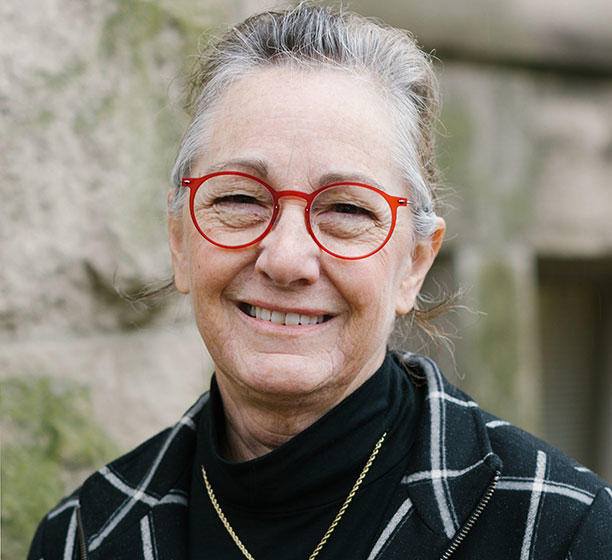Lisa Pratt *82 Begins New Role as NASA’s Planetary Protection Officer
Lisa Pratt *82, an astrobiologist who recently began a new post as NASA’s planetary protection officer, didn’t initially aim for a career as a scientist.
“I came out of high school bound and determined to never take another science class for the rest of my life,” she said. “There were very few women in science. … I just got tired of being the only female in advanced math.”
Luckily, she gravitated back toward the sciences in college, earning undergraduate and master’s degrees in botany and geology at the University of North Carolina and the University of Illinois before pursuing her Ph.D. in geology at Princeton. Last week, after three decades as a professor of earth and atmospheric sciences at Indiana University, Pratt began her new post at NASA, where she’s responsible for protecting Earth from possible forms of life on other planets, such as Mars — and vice versa.
The path to NASA began at Princeton, where Pratt shared an office with Bruce Douglas *82, her future husband, and Tullis Onstott *81, a Princeton professor of geosciences who would become a longtime research collaborator. Pratt focused on the geochemistry of buried organic matter — an area of research relevant to the oil industry — but passed up job offers from oil companies to pursue postdoctoral work with the United States Geological Survey.
After joining the Indiana faculty, Pratt researched the nature of petroleum source rocks, as well as microorganisms that are able to thrive in extreme environments, such as the subsurface of the Earth. When Onstott reached out to her in the 1980s to co-lead a study on organisms potentially living beneath a gold mine in South Africa, she told him that it was “crazy research” and had no chance of receiving funding. But she agreed to co-author the grant proposal and was surprised when the funding was approved.
The research drew attention from NASA, Pratt said, and in the years that followed, researchers began to consider “how our understanding of extreme life on Earth … influenced the way in which we searched for life on another planetary body.”
Pratt became involved with several NASA initiatives, serving as the team director of the NASA Astrobiology Institute, the chair of NASA’s Mars Exploration Program Analysis Group, and a member of the Return Sample Science Board for the Mars 2020 Rover mission, which is responsible for the safe transport of Martian samples to Earth. In 2011, she received a $2.4 million grant from NASA’s Astrobiology Science and Technology for Exploring Planets program to study methane emissions and microbial life on the margin of the Greenland ice sheet.
Her new role in planetary protection “fits at the interface between the active planning of missions, the execution of missions, and then the policies that are developed in the international community,” she said. Pratt explained that the issue of contamination may already exist, noting that data from the Viking mission didn’t indicate any presence of life on Mars. Because of this, nations began relaxing cleanliness requirements, and missions to Mars since then could have transported Earth life to Mars, potentially contaminating Martian life samples or the ground ice below Mars’ surface.
“We are hoping that nothing we took with us could actually take hold,” she said. “It’s an interesting unknown.”
She added that the uptick in space exploration has raised the possibility of coming into contact with life forms on other planetary bodies, and that there need to be protocols in place to preserve the integrity of these life forms and understand their origins and evolution.
“These are some of the most profound questions to be addressed by science,” Pratt said. “It changes everything if the origin of life is a common occurrence … and if life jumped from one place to another.”
Despite inspection and transportation protocols, Pratt said that once humans land on Mars, contamination is virtually guaranteed — it’s “impossible to take clean astronauts.” The time to determine whether there truly is past or present life on Mars could be dwindling.
“If it is there,” Pratt said, “it’s going to have to cohabitate with what we bring along.”












1 Response
Qedlin Saltum
7 Years AgoBest wishes with the new position...
Best wishes with the new position, but you are encouraged to not succumb to the present naturalist prospect of life simplicity and ubiquity. The forced trivialization is the product of presumptive ideology, not objective science. Mars contamination is already a fact. Since there is no naturalistic origin of life on Earth, there is none on Mars.